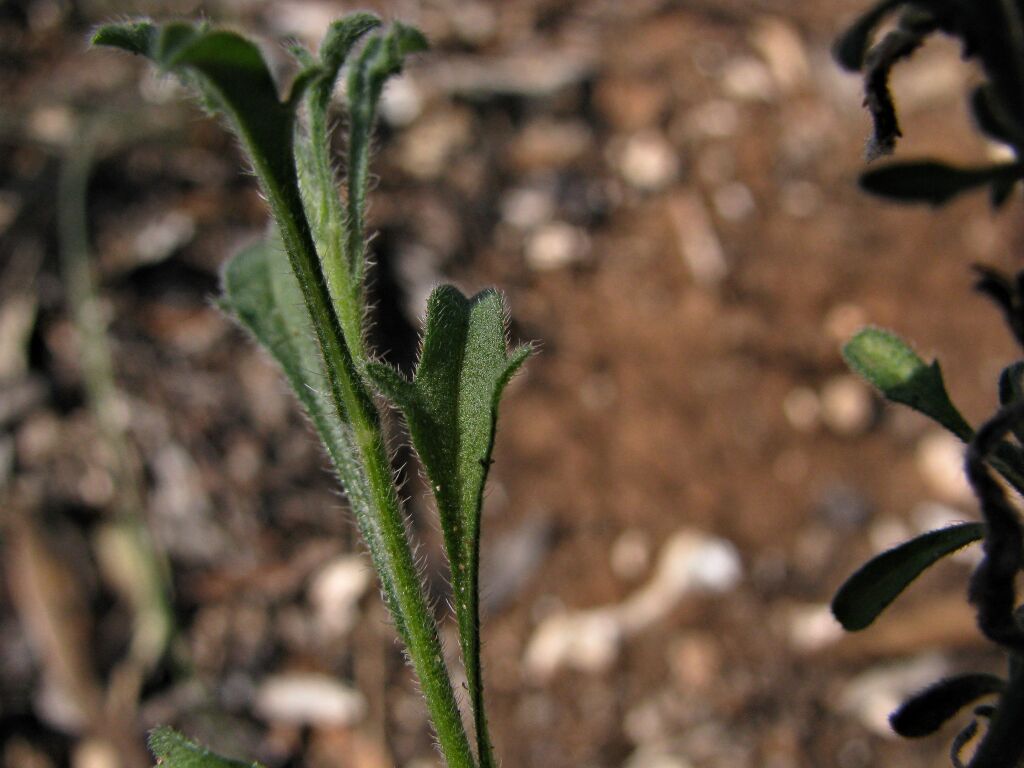Vittadinia cervicularis
N.T.Burb.Annual or perennial, 10–40 cm high; stems branched above base, leafy throughout; stems, leaves and involucral bracts with moderately dense, subapressed or spreading simple hairs and minute glandular hairs (or bracts sometimes glabrescent). Leaves narrowly oblanceolate to obovate or spathulate, c. 10–30 mm long, 1–10 mm wide, often conduplicate, entire or with 1 or 2 pairs of teeth or short lobes above midway; apex obtuse to acute, often recurved. Involucral bracts linear, the longest 8–12 mm long; ray florets purple to whitish, ligules 1–3.5 mm long. Cypsela oblanceolate, sometimes with a narrow subapical neck, 6–10 mm long, flattened, margins strongly thickened, faces with 2–6 ribs, at least some uniting with marginal ribs and/or each other near the apex, hairs scattered, sometimes sparse near base, simple or minutely bilobed apically, sessile or shortly stalked glands present at least near apex; pappus bristles barbellate, the longest 6.5–10 mm long. Flowers mainly Sep.–Dec.
LoM, MuM, Wim, VVP, VRiv, MSB, RobP, MuF, GipP, Gold, CVU, GGr, DunT, EGL, EGU, HSF, MonT, VAlp. Also WA, SA, NSW. Not uncommon in sandy mallee of north-western Victoria, scattered from there in drier woodlands to near Melbourne, with easterly disjunctions in the Stratford, Deddick and Suggan Buggan areas.
Burbidge (1982) recognized 4 varieties of V. cervicularis, 2 confined to Western Australia: var. cervicularis extending across the country, and var. subcervicularis occurring in New South Wales and Victoria. The distinction between the latter 2 varieties (at least some of the cypselas of var. cervicularis with a distinct subapical neck, those of var. subcervicularis with an indistinct neck) is not reliable in Victorian specimens (including those determined by Burbidge) and does not correlate with other morphological or ecological attributes.
Walsh, N.G. (1999). Vittadinia. In: Walsh, N.G.; Entwisle, T.J., Flora of Victoria Vol. 4, Cornaceae to Asteraceae, pp. 869–877. Inkata Press, Melbourne.
 Spinning
Spinning


